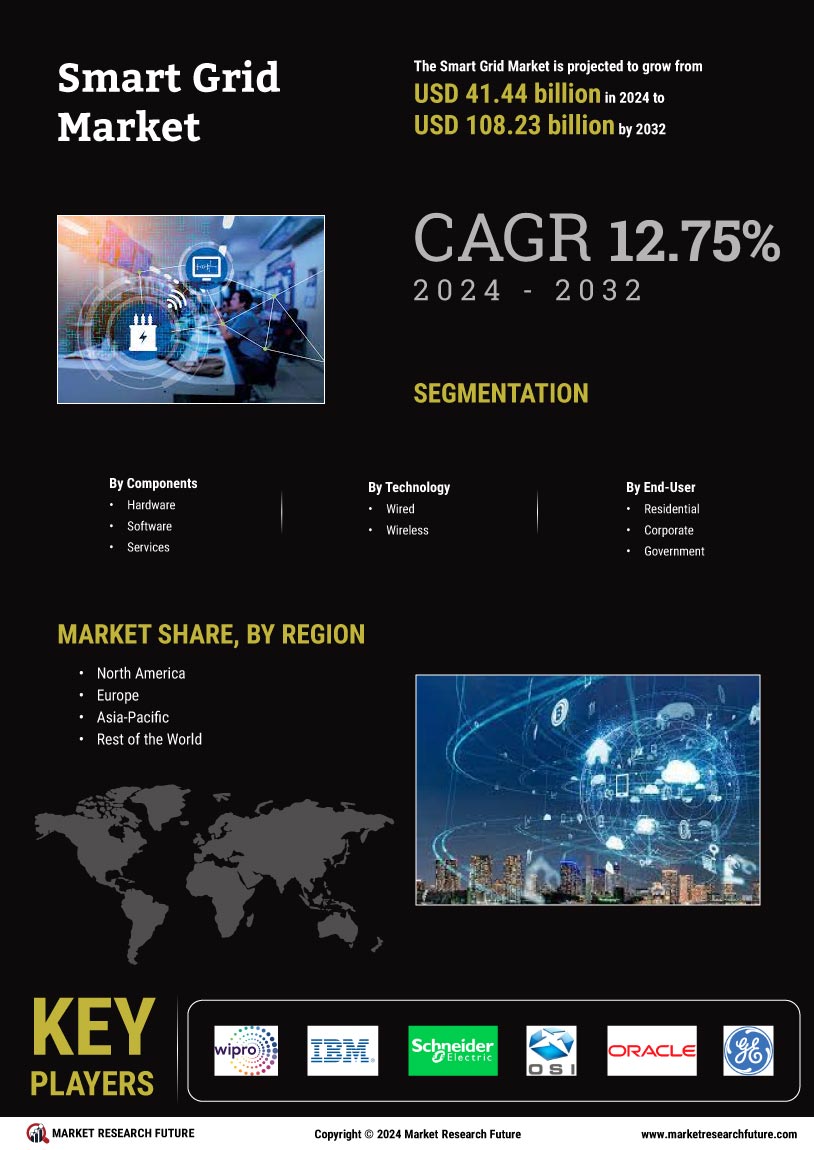Advancements in Data Analytics
Advancements in data analytics are transforming the Smart Grid Market by enabling more efficient energy management. The proliferation of smart meters and IoT devices generates vast amounts of data, which can be analyzed to optimize energy consumption and improve grid reliability. Enhanced data analytics tools allow utilities to predict demand patterns, identify outages, and manage resources more effectively. As a result, the market for smart grid analytics solutions is expected to witness robust growth, with estimates indicating a compound annual growth rate that could exceed 20% over the next few years. This trend underscores the critical role of data in shaping the future of the Smart Grid Market.
Decentralization of Energy Systems
The Smart Grid Market is experiencing a notable shift towards decentralized energy systems. This transition allows for localized energy generation and consumption, which enhances energy security and resilience. As consumers increasingly adopt distributed energy resources, such as solar panels and wind turbines, the demand for smart grid technologies rises. According to recent data, the market for decentralized energy systems is projected to grow significantly, with investments in smart grid infrastructure expected to reach substantial figures by 2026. This decentralization not only empowers consumers but also facilitates better integration of renewable energy sources, thereby driving the Smart Grid Market forward.
Government Initiatives and Policies
Government initiatives and policies play a crucial role in shaping the Smart Grid Market. Many countries are implementing regulations and incentives to promote the adoption of smart grid technologies. These policies often focus on enhancing energy efficiency, reducing greenhouse gas emissions, and integrating renewable energy sources. For instance, various governments have set ambitious targets for smart grid deployment, which could lead to increased investments in infrastructure. Recent reports suggest that public funding for smart grid projects is expected to rise significantly, reflecting a commitment to modernizing energy systems. Such initiatives are likely to drive growth in the Smart Grid Market.
Consumer Demand for Energy Efficiency
Consumer demand for energy efficiency is a significant driver in the Smart Grid Market. As awareness of environmental issues grows, consumers are increasingly seeking ways to reduce their energy consumption and lower utility bills. Smart grid technologies, such as smart meters and home energy management systems, empower consumers to monitor and control their energy use more effectively. Recent surveys indicate that a substantial percentage of consumers are willing to invest in energy-efficient technologies, which bodes well for the smart grid sector. This rising demand for energy efficiency not only enhances consumer satisfaction but also stimulates innovation within the Smart Grid Market.
Integration of Renewable Energy Sources
The integration of renewable energy sources is a pivotal driver in the Smart Grid Market. As nations strive to reduce carbon emissions and transition to sustainable energy, the need for smart grid solutions becomes increasingly apparent. The ability to efficiently manage and distribute energy from renewable sources, such as solar and wind, is crucial. Recent statistics indicate that the share of renewables in the energy mix is on the rise, with projections suggesting that by 2025, renewables could account for a significant portion of total energy generation. This shift necessitates advanced smart grid technologies to ensure reliability and stability in energy supply, thereby propelling the Smart Grid Market.


















Leave a Comment